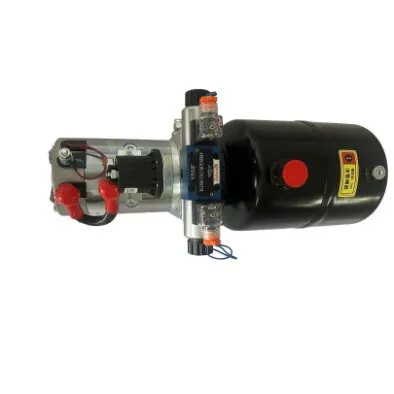ਨਵੰ. . 01, 2024 10:02 ਸੂਚੀ 'ਤੇ ਵਾਪਸ ਜਾਓ
Characteristics and Working Principle of Hydraulic Cylinder
Hydraulic cylinder is an important actuator in hydraulic transmission system. The following will provide a detailed explanation of the characteristics and working principles of hydraulic cylinder.

Characteristics of Hydraulic Cylinder
Hydraulic cylinders have the following significant characteristics:
Compact structure and reliable operation: Hydraulic cylinders are usually composed of cylinder barrels, pistons, piston rods, seals, and other components, with a relatively compact and simple structure. Its working principle is based on the incompressibility of liquids and Pascal's law, so it works stably and reliably, and can operate for a long time in harsh working environments.
High output force: Hydraulic cylinder can generate a large output force due to the pressure transmission characteristics of their internal fluids. By increasing the area of the piston, the hydraulic cylinder can generate greater force under the same liquid pressure, making it suitable for driving heavy loads.
Easy to achieve precise control: Hydraulic cylinder can be used in conjunction with hydraulic valves, hydraulic pumps, and other components to achieve precise control of displacement, speed, and force. This makes hydraulic cylinders have broad application prospects in automation and intelligent control systems.
Strong adaptability: Hydraulic cylinders can be customized according to different work requirements, such as changing cylinder diameter, stroke, installation method, etc. This flexibility enables hydraulic cylinders to adapt to various complex working environments and application scenarios.
Working Principle of Hydraulic Cylinder
The working principle of hydraulic cylinder is based on Pascal's law, which states that when the pressure of a liquid in a closed container is transmitted to any part of the liquid in all directions, the pressure remains constant. Specifically, the working principle of hydraulic cylinders includes the following steps:
Pressure transmission: When the hydraulic pump delivers high-pressure liquid to the inlet of the hydraulic cylinder, the liquid pressure is transmitted to one side of the piston.
Piston movement: Under the action of liquid pressure, the piston will move to the other side. Due to the incompressibility of liquids, the movement of the piston compresses and squeezes the liquid, causing it to be discharged through the outlet of the hydraulic cylinder.
Output force: The movement of the piston generates a certain output force, which depends on the pressure of the liquid and the effective area of the piston. By adjusting the pressure of the liquid and the area of the piston, precise control of the output force can be achieved.
Return control: In some cases, hydraulic cylinder need to achieve return movement. This can be achieved by changing the direction of liquid flow or adding components such as return springs.
In summary, hydraulic cylinder play an important role in hydraulic transmission systems due to their compact structure, reliable operation, high output force, easy implementation of precise control, and strong adaptability.
As a is a company specializing in hydraulic machinery, our business scope is very broad . We have double acting power unit, automotive lift power unit , lift power unit , hydraulic cylinder , snow plow hydraulic cylinder , air hydraulic cylinder , foot pump hydraulic cylinder , simplex hydraulic cylinder , tilt hydraulic cylinder and dual hydraulic cylinder . The hydraulic cylinder price in our company are reasonable . If you are interesting in our product welcome to contact us!
-
Unleash Power and Precision with a Double Acting Power Unit
ਖ਼ਬਰਾਂJun.06,2025
-
Understanding Single Acting Hydraulic Cylinders: A Comprehensive Overview
ਖ਼ਬਰਾਂJun.06,2025
-
The Power of Single Acting Hydraulic Cylinders: Solutions for Your Heavy Lifting Needs
ਖ਼ਬਰਾਂJun.06,2025
-
Double-Acting Hydraulic Cylinders: The Key to Efficiency and Reliability in Industrial Machinery
ਖ਼ਬਰਾਂJun.06,2025
-
Single Acting Power Units for Your Hydraulic Needs
ਖ਼ਬਰਾਂJun.06,2025
-
Discover the Superior Performance of Single Rod Hydraulic Cylinders
ਖ਼ਬਰਾਂJun.06,2025
